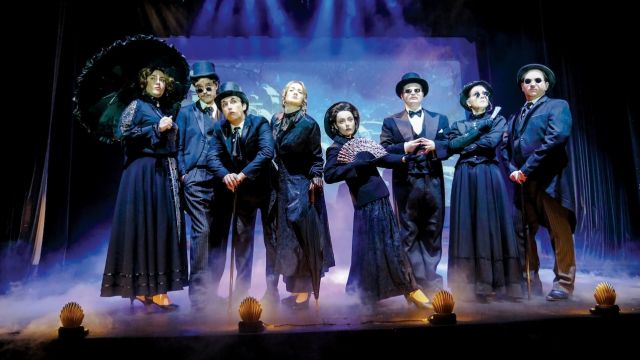A Gentleman’s Guide to Love and Murder
A Gentleman’s Guide to Love and Murder cannot be mentioned without the word “awards” in the same or following sentence. Partially developed in 2006, A Gentleman’s Guide to Love and Murder (AGGTLAM) premiered on Broadway in 2013. The show received four Tony Awards (from ten nominations), including Best Musical. Of thirteen Drama Desk nominations in 2014, AGGTLAM took seven categories, including Book, Lyrics and Best Actor. The Best Actor award was given to Jefferson Massey for his role(s) as The D’Ysquith Family (all eight of them).
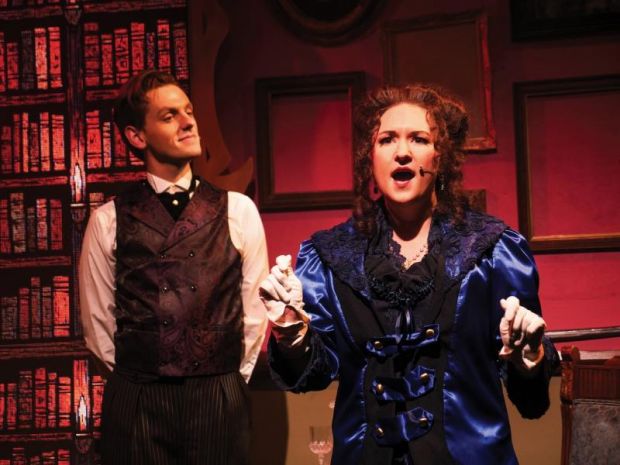
The music is eclectic within the styles and tropes one expects for the genre but with modern sensibilities and orchestration– a little bit of G and S, a little bit Classic Broadway, some British Music Hall with a dash of the Addams Family thrown in. There are trios and quartets of which Mozart would be proud and the whole is charmingly orchestrated. It is a comic pastiche with lyrics that are witty and playful. It is a vocally demanding score and the thirteen members of the Hobart cast absolutely deliver.
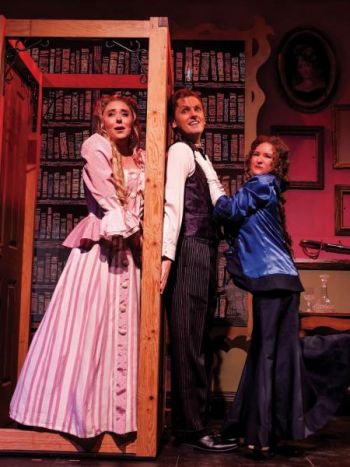
The story is set in 1907. Young Monty Navarro, a man of limited prospects, learns he is ninth in line to inherit the earldom of Highhurst. He, somewhat accidentally, sets out upon a course to murder the eight D’Ysquith heirs – all of whom are played by one actor, in this instance, Ian Williams.
Ian Williams is the perfect choice for this physically and vocally demanding role in which he is required to be affected, exaggerated and camp. All of the D’Ysquith heirs are abhorrent and the show is worth seeing just to see Ian Williams bumped off seven times.
The stakes are never high. Even in “I've decided to marry you” when Monty is trapped between two women via communicating doors, the comedy outweighs any real sense of risk. Despite the initial warning (in a stunning blue tableau by the ensemble) that the plot is likely to cause the audience some distress, sympathy remains with Monty and never with his victims. David Thomson (who has a wonderful falsetto) has the correct bearing and charm for the role. The murder methods are increasingly inventive and the D’Ysquith demise is always well deserved.
So much for “murder”. The “love” aspect of the plot causes the hero more consternation and audience sympathies are confused. Monty must choose between the vain and shallow Sibella (Genevieve Dawkins) and the sweet ingenue, Phoebe D’Ysquith (Grace Burdick). Dawkins is Hobart born but has studied interstate. Her voice is a knockout. The penultimate number was a show stopper with Dawkins pitted against local Grace Burdick in “That Horrible Woman”. This soprano-on-soprano action rivals WWE and the opening night crowd was very vocal in its appreciation.
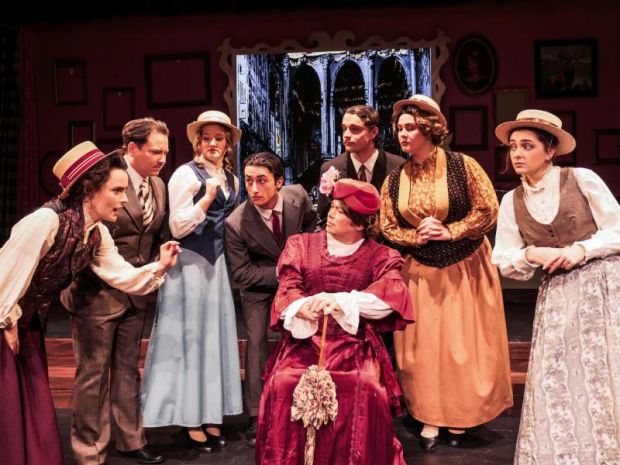
The voices of the ensemble are all strong. Harmonies are solid and (in an unusual move for The Playhouse) the use of body microphones means every word and vocal line was heard, even in the numbers such as the delightful “Poison in my pocket” in which several tunes are sung simultaneously. Astrid Tiefholz is strong as Miss Shingle, infusing “You’re a D’Ysquith” with character acting and a cockney accent in which vocal technique is never sacrificed. Tiefholz’ navigates the tight rope walk which constitutes the various pauses and rubato in the canned music with an elegance. The Playhouse is too small to accommodate the necessary musical ensemble but the recorded tracks flow seamlessly.
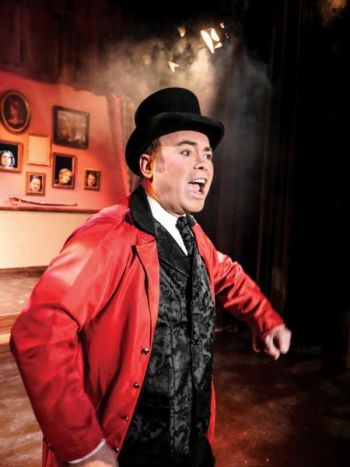 There are outstanding voices in the ensemble which is stacked with emerging talent. A number of the cast have been more recently accustomed to lead roles, as is evident in the strength and versatility of the chorus, but all are given moments in which to shine as individuals.
There are outstanding voices in the ensemble which is stacked with emerging talent. A number of the cast have been more recently accustomed to lead roles, as is evident in the strength and versatility of the chorus, but all are given moments in which to shine as individuals.
A Gentleman’s Guide to Love and Murder is an auditory but also a visual treat. The oyster shell footlights are a charming touch, evocative of the period in which the show is set. As well as the aforementioned communicating doors (which are flimsy but very well used), highlights of the set include the projections on a large LED screen in the guise of a portrait. Other portraits have a role to play. Various flats are used to quaintly depict snow drifts and statuary. The action is very much down stage and on two levels. Choreographed movement (rather than dance) contributes to the dynamism and pace of the show.
The costumes are delightful. Ian Williams manages not to raise a sweat through numerous quick changes. The women are all gorgeous in mourning blacks, bridal corsets and Edwardian day wear. Sibella (Dawkins) postures in various figure-hugging models of pink and mushroom satin. Phoebe (Burdick) contrasts in various blue designs, draped with pearls and swathed in lace. Sophie Henderson has a moment in mermaid green. Wigs and hats are all on point. Karen Fahey has outdone herself. The invisible costume crew and backstage minions deserve acknowledgement.
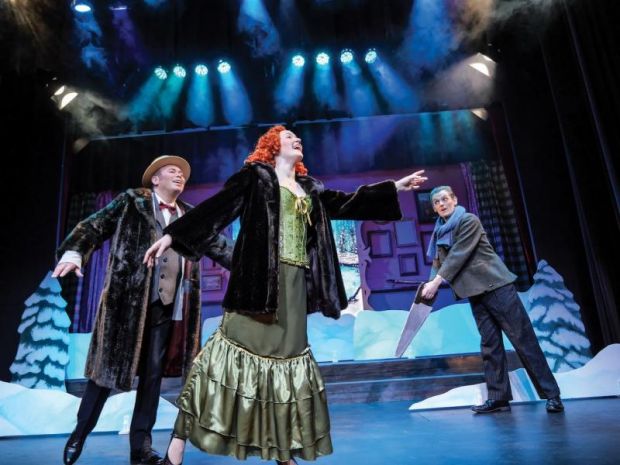
A Gentleman’s Guide to Love and Murder is well deserving of the accolades and this Hobart season, directed by Justin Turner, has a worthy cast and exhibits production values that guarantee to please. The show ridiculous, absurd, clever and thoroughly entertaining.
Anne Blythe-Cooper
Photo Credits: Wayne Wagg, Tony Horsham and Suzen Parnell
Subscribe to our E-Newsletter, buy our latest print edition or find a Performing Arts book at Book Nook.

